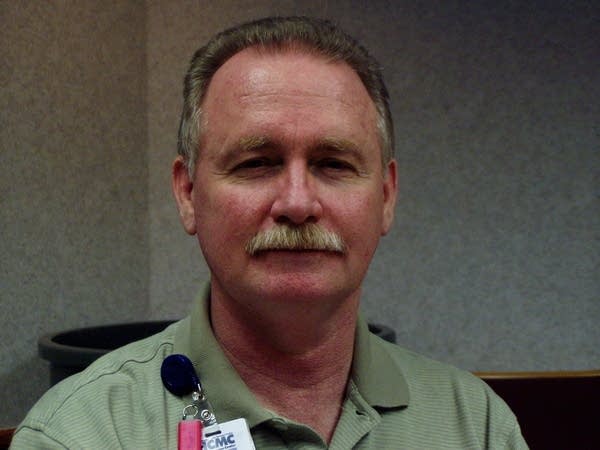Hospitals say they're ready for Republican convention
Go Deeper.
Create an account or log in to save stories.
Like this?
Thanks for liking this story! We have added it to a list of your favorite stories.

One of the busiest spots inside St. Paul's Regions Hospital is a small room filled with radio gear and computer monitors. Rick Huston, the hospital's director of plant operation, explained the role of the Medical Resource Control Center.
"This is kind of the radio control room for all that happens in EMS on the East Side," he said. "So any ambulances that are coming into the St. Paul area that are going to take a patient to a St. Paul hospital it's going to come through this center right here."
Regions is a 427-bed hospital and the closest Level I Trauma Center to the Xcel Energy Center, where Republicans will hold their national convention. Huston said there's been lots of planning for the influx of an estimated 45,000 visitors during the convention.

"We are anticipating that we will see a fair number of patients just because of the expanded population," he said. "At the same time on Labor Day the State Fair is ending up, so we'll still have that volume coming through and we have our normal patient population to take care of as well. So we are putting plans together right now that will help us to care for an expanded population."
Turn Up Your Support
MPR News helps you turn down the noise and build shared understanding. Turn up your support for this public resource and keep trusted journalism accessible to all.
Huston didn't offer many details, but other hospital officials have said they expect emergency room visits a Regions could double to about 300 patients a day during the RNC.
Dr. Michael Osterholm, director of the Center for Infectious Disease Research and Policy at the University of Minnesota, said the biggest concern is a terrorist attack involving explosives or chemicals.
But Osterholm said the federal government will deploy extra medical equipment and personnel to the Twin Cities during the convention.
"Our health care system in Minnesota, like the rest of the country, has been gnawed to the bone, and frankly we've been sucking calcium."
"These are still going to be trying times," he said. "Our health care system in Minnesota, like the rest of the country, has been gnawed to the bone, and frankly we've been sucking calcium. We have no real excess capacity. But with those federal assets it will sure help."
Earlier this year, a congressional panel looked into the capacity of Level I trauma centers in seven large cities to handle a large scale emergency. The measuring stick was the 2004 terrorist bombing in Madrid, when 10 bombs exploded within 10 minutes of each other at railway stations.
The attacks killed 177 and injured more than 2,000.
None of the 34 U.S. hospitals surveyed earlier this year had the emergency space needed to handle a similar number of casualties. The results showed Hennepin County Medical Center in Minneapolis had five treatment spaces open in the emergency room. There were three beds available in the intensive care unit.
"Maybe they didn't explore the topic deep enough," said Mark Lappe, the director of safety, security and emergency preparedness at Hennepin County Medical Center.

Lappe is in charge of the hospital's planning efforts, which include responding to a surge of patients during an emergency. He said the snapshot of capacity on a given day didn't seem to take into account that planning, which was put to the test last summer with the collapse of the 35W bridge.
Lappe said HCMC had only 5 intensive care beds open at the time of the bridge collapse.
"And in 45 minutes we were able to identify how we could move patients and open up other areas to actually create 25 intensive care unit beds that then could be quickly staffed and have the available resources to treat critically ill patients, as well as additional space within the hospital to admit some of the patients not in need of intensive care but in need of admission to the hospital and ongoing care," he said.
Still, Lappe said even well-prepared hospitals are not necessarily ready for everything. He said a mass-casualty emergency, an epidemic or a pandemic would put big strains on the area's medical system.
But Lappe said that's why HCMC and other area hospitals are always working together on how to share space and resources during events they hope will never occur. He said Minnesota hospitals are recognized nationally as leaders in emergency management planning.



